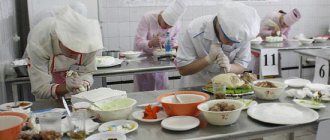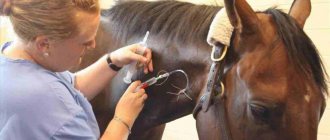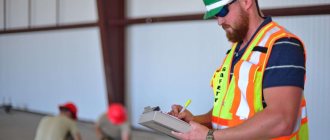What does a meat tenderizer do?
Boning (or deboning) is the process of mechanically or manually separating meat from bones, removing skin (feathers), and removing unnecessary parts when butchering an animal. The final and most subtle stage of these manipulations is trimming, that is, the final cleaning of meat from various films, ligaments, cartilage and other hard tissues. Thus, semi-finished products acquire a marketable appearance and the necessary consumer qualities.
The history of this specialty has very deep roots and the first mention of such a name can be attributed to the Middle Ages. But so far, the cutting of carcasses was carried out mainly by hand, and only butchers dealt with deboning and sawing of killed animals. A narrower division of labor in this area was achieved relatively recently - about 10-15 years ago.
Initially, meat deboners were kitchen servants who received special skills in separating meat from animal bones. Of course, at that time this type of activity was exclusively male, since it required working in far from comfortable conditions and being strong enough.
Later, such specialists began to work in butcher shops. Boners prepared products for further sale and carried out some tasks for the butcher, in addition to their main activities.
Today, there are several narrower specializations among deboners: meat deboner, poultry deboner, fish deboner.
Responsibilities of a meat tenderizer
The job duties of a boning operator have not changed significantly over time: cutting up carcasses, separating meat from bones and preparing semi-finished meat products.
At the same time, the toolkit has expanded significantly - now the deboner has knives, hand and mechanical saws at his disposal. In addition, large meat processing plants often use conveyor belts. Therefore, the meat deboner also needs to understand the principles of its operation and the features of the device.
The main requirement for a deboner at an enterprise is to work quickly and cut the meat in the most rational and economical way possible. Such mastery is achieved only through constant practice.
However, in order to successfully cope with responsibilities, a deboner must know:
- basics of animal anatomy;
- requirements for sanitary and hygienic standards during work;
- meat quality standards;
- device and rules for using mechanical saws, as well as circular knives;
- identification of low-quality products and their rejection.
In many ways, the responsibilities and necessary standards for the work of a meat deboner are spelled out in the following documents, which a specialist must familiarize himself with before starting work:
- principles of organizing safe production;
- fire safety regulations;
- basics of industrial sanitation;
- quality standards for work performed.
Responsibilities
Responsibilities largely depend on the rank of specialist. The work can be simple or complex. Here is an example of the standard responsibilities of a housekeeper:
- Cutting cooked meat for sausages and other culinary production.
- Cutting meat and offal into pieces of a certain size.
- Removal of films from the liver, bile ducts, tendons, blood vessels and affected parts.
- Removing skins from bacon trimmings and back fat.
- Placement of aged fat, meat, cartilage and other waste into special containers.
The set of responsibilities may vary slightly, but basically the list looks like this.
Requirements for the profession of meat tenderizer
Since the specialist works with raw meat, and in the process uses sharp tools that can cause various injuries and damages, only adult men and women can work in this position.
Also, the work requires clear and precise movements, so specialists with problems with coordination of movements or vision cannot be allowed to do it. And, of course, persons with mental disabilities cannot be accepted as meat deboners. Another important requirement for a meat tenderizer is the absence of any phobias. Like a fear of blood.
Representatives of this specialty also have their own occupational diseases. Due to the fact that the deboner has to stand for a long time, it puts serious stress on the back and joints, which can subsequently lead to the occurrence of related diseases.
What qualities should a deboner have?
A person applying for this position, first of all, must be very resilient and strong. After all, throughout the entire shift you will have to stand on your feet and at the same time wield a knife, which has a decent weight. If the deboner is cutting up a whole carcass rather than its individual parts, then you should prepare for the fact that it will be necessary to drag heavy pieces of meat.
But more importantly, such a specialist must calmly tolerate the sight of blood and the smell of dead flesh. If at first this does not seem like a very difficult task, then after a few weeks many cannot stand it.
Well, an important quality is the desire to develop, because in this position there is an opportunity to grow professionally. To be more precise, deboners are divided into six categories, each of which indicates a level of skill. For example, the sixth is the highest and gives access to work at any
Place of work and operating conditions
The main place of work for such a specialist, of course, is meat processing plants. Therefore, the work schedule can be either shift work or a classic five-day work week.
It is worth noting that meat processing plants also have special premises for employees and issue the uniform necessary for work. Therefore, we can say that the conditions for workers are quite comfortable.
In addition, deboners often work in retail establishments that sell food products. Although their working conditions here are not much different from meat processing plants.
Where to study to become a deboner
- You can get the profession of a deboner-tenant in college.
- Also, some meat processing plants themselves train novice workers in deboning and trimming with the help of mentors.
As the experts themselves say, it takes more than one year to gain experience. However, to learn everything you need for work and master all the necessary skills, three months under the guidance of an experienced mentor is enough. The qualifications of a specialist are indicated using categories, of which there are six in total. The more experienced the specialist, the higher the rank number he can count on. Workers of the sixth category are highly qualified specialists who can perform any type of work.
Where can I learn to be a meat tenderizer?
In order to get a job as a meat deboner, you must obtain a specialized education. The profession can be mastered in secondary specialized educational institutions. The average duration of education is about two years. During the training process, future specialists receive the necessary knowledge of the anatomical structure of animals and standards for meat processing.
In addition, many meat processing plants have introduced trainee positions, which can be filled by people without appropriate education. Specialists in this position undergo training as part of the work process. Later, they may get a position as a full-time meat deboner. It should also be noted that interns receive lower salaries than employees with specialized education.
Job Description for a Meat Products Cutter
JOB DESCRIPTION
meat products sawer
1. GENERAL PROVISIONS
1.1. This job description defines the functional duties, rights and responsibilities of the meat products cutter “_____________” (hereinafter referred to as the “Organization”).
1.2. A meat products sawer is appointed to a position and dismissed from a position in the manner established by the current labor legislation of the Russian Federation by order of the head of the Organization.
1.3. The meat cutter reports directly to the _____________ Organization.
1.4. A person with ________________ education and ____ years of work experience in the specialty is appointed to the position of a meat products sawer (without presenting requirements for work experience).
1.5. A meat cutter must know:
— design and principle of operation of the sawing machine;
— rules for the selection and preparation of raw materials for packaging meat products;
— state standards for semi-finished meat and bone products and packaged meat;
— rules for installing the cutting blade in the sawing machine;
— design and rules for setting up a sawing machine;
— anatomical structure of livestock carcasses of all types;
— state standards for retail varietal cutting of meat carcasses;
— rules for the selection and preparation of raw materials for packaging meat products;
— state standards for semi-finished meat and bone products and packaged meat;
— rules and regulations on labor protection, industrial sanitation and fire safety;
— rules for using personal protective equipment;
— requirements for the quality of work (services) performed;
— types of defects and ways to prevent and eliminate them;
— production alarm;
— requirements for the rational organization of labor in the workplace.
1.6. During the period of temporary absence of the meat products sawer, his duties are assigned to ______________.
2. FUNCTIONAL RESPONSIBILITIES
The meat products sawer carries out:
Selection and preparation of raw materials for packaged meat, block meat products, stews, soup sets and other semi-finished meat and bone products.
Sawing (cutting) of meat carcasses of all types (half carcasses, quarters) into varietal cuts in compliance with state standards for retail cutting and yield standards by variety.
Dismemberment of carcasses, half-carcasses, quarters into main cuts before sawing.
Setting up, testing and adjusting the sawing machine, straightening, sharpening the cutting blade.
Monitoring the good condition of fencing devices.
Selection and preparation of raw materials for packaged meat, block meat products, stews, soup sets and other semi-finished meat and bone products under the guidance of a more highly qualified meat product cutter.
Sawing, slicing of high-quality cuts and parts of carcasses (for combined cutting), edible bones for the production of packaged meat, stews, soup sets and other semi-finished meat and bone products.
Installing the cutting blade into the sawing machine, testing its operation, disassembling its mechanisms.
3. RIGHTS
The sawyer of meat products has the right:
3.1. Request and receive the necessary materials and documents related to the activities of the meat products cutter.
3.2. Enter into relationships with departments of third-party institutions and organizations to resolve operational issues of production activities that fall within the competence of the meat products sawyer.
4. RESPONSIBILITY
The meat cutter is responsible for:
4.1. Failure to fulfill one's functional duties.
4.2. Inaccurate information about the status of the work.
4.3. Failure to comply with orders, instructions and instructions from the head of the Organization.
4.4. Failure to take measures to suppress identified violations of safety regulations, fire safety and other rules that pose a threat to the activities of the Organization and its employees.
4.5. Failure to ensure compliance with labor discipline.
5. WORKING CONDITIONS
5.1. The work schedule of a meat products sawer is determined in accordance with the Internal Labor Regulations established in the Organization.
5.2.
Due to production needs, the meat products sawer is required to go on business trips (including local ones). I have read the instructions ___________________/__________________ (signature)
Rank of the meat tenderizer profession
The specialist’s qualification level determines the type of work to which he can be admitted.
Meat cutter 3rd class
Engaged in deboning of both whole carcasses and their parts.
Meat deboner 4th grade
Can only work with one type of livestock.
Meat cutter 5th grade
Carries out the necessary work on cutting up all types of livestock, both manually and using mechanical saws.
Meat cutter 6th grade
Works with carcasses, which are necessary for the production of semi-finished products and sausages.
Advantages and disadvantages of the profession
Let's start with the positive aspects. The first thing is that this profession is in great demand on the labor market; moreover, in large regional centers there are always advertisements: “Meat deboner wanted.” Kyiv, Moscow, Minsk - in fact, in any city or country this specialist will always be at work. Moreover, their salary is very impressive, at least for mid-level workers.
As for the disadvantages, the increased risk to life dominates here. Not only do you have to work with dangerous knives and blades, but also the bodies of animals can be carriers of many diseases. However, all legal supplies are checked by veterinarians, which reduces the risk of meat contamination.







